Cinque Terre National Park, the first of its kind in Italy, was established in 1999. It is located in northern Italy, in the province of La Spezia. This region consists of five colorful and picturesque villages: Monterosso al Mare, Vernazza, Corniglia, Manarola, and Riomaggiore. These villages are especially famous for their colorful houses perched on cliffs right next to the sea. Cinque Terre is part of a national park and is listed as a UNESCO World Heritage site.

Cinque Terre is definitely one of the most popular tourist destinations in northern Italy. I bring you tips from my own experience to help you feel less lost when you embark on this distant adventure.
Why do I say distant? It felt distant to us, considering that we traveled from Poggibonsi (located halfway between Siena and Florence), and the journey (via the old road) took a little over 4.5 hours. The return trip (on the highway) took about 3 hours (the highway from La Spezia to the exit in Florence costs around 10 euros).
There are several ways to reach this small oasis. Perhaps the easiest and quickest route is from La Spezia, a city located just below the hills where Cinque Terre is situated, from where the so-called Cinque Terre Express departs. There are also options from Florence, Pisa, or even Milan, but the train ride from these cities takes about 3 hours.

As for the train and the timetable, the train runs every day of the week from the end of March to the beginning of November, with departures every 15 minutes, which is quite understandable given the sea of people that flock there every day. Off-season (mid-November to mid-March), the train runs once or twice an hour.
Regarding ticket prices, it depends on where you are traveling from, but it might be more cost-effective to purchase the Cinque Terre Train Card, which gives you access to all five villages by train and access to hiking trails. The price of the Cinque Terre Train Card is 18.20 euros, while the hiking trails (without the card) cost 7 euros per person. You might wonder why the hiking trails are charged? It’s because most of these paths actually go through the national park. It’s important to note that off-season access to the hiking trails is free.
If you opt for the route we took, by renting a car, be mindful of the location you choose for your departure and plan the route you want to take. If you simply enter “Cinque Terre” on Google Maps, it will first direct you to Monterosso.
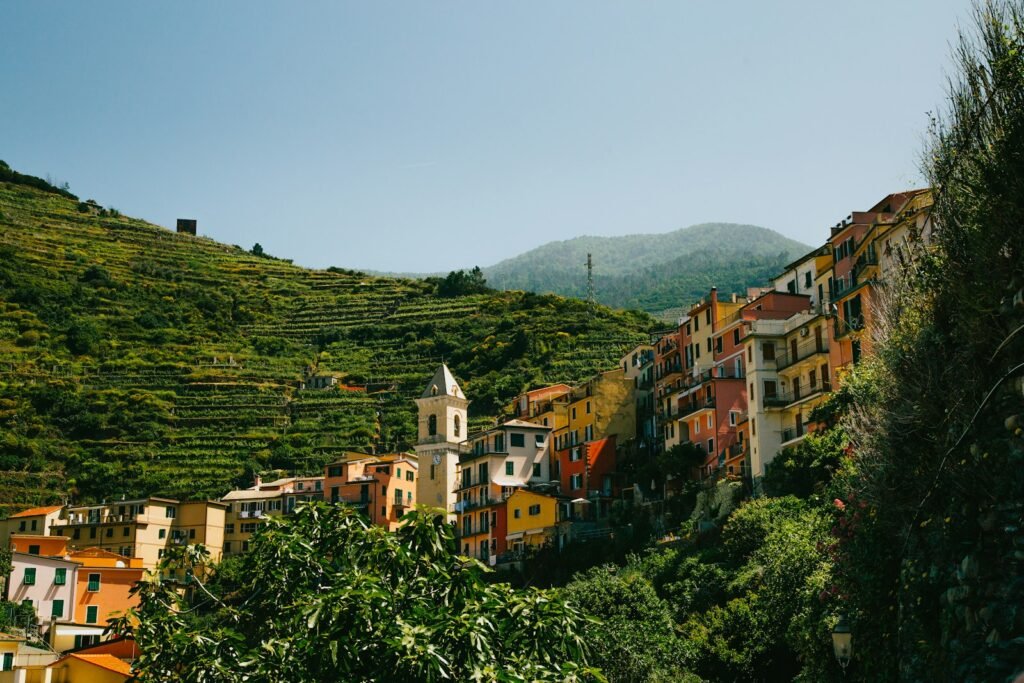
Monterosso al Mare
The northernmost village in the Cinque Terre region and the largest of all five villages. Unlike the other four sister villages, the landscape of Monterosso is not as steep, meaning you can spend the whole day without climbing hills and stairs. Monterosso consists of an old town, a new town, many sandy beaches, a few larger hotels, and a long seaside promenade.
If you’re arriving by car, be prepared to be stopped about 7 km from the village entrance (at the top of the hill) as car access is limited. This is where the search for parking begins, which soon becomes impossible due to the large number of cars arriving.
Once you’ve parked, a bus takes you down to the village itself. Buses back run every few hours, and the schedule is posted at the station where the bus drops you off. The bus ride is free, but you should also be prepared that if the bus is full, you won’t be able to board.
If you find yourself in a situation where you can’t board the bus or simply want to return to your car earlier, a taxi will cost you 25 euros.

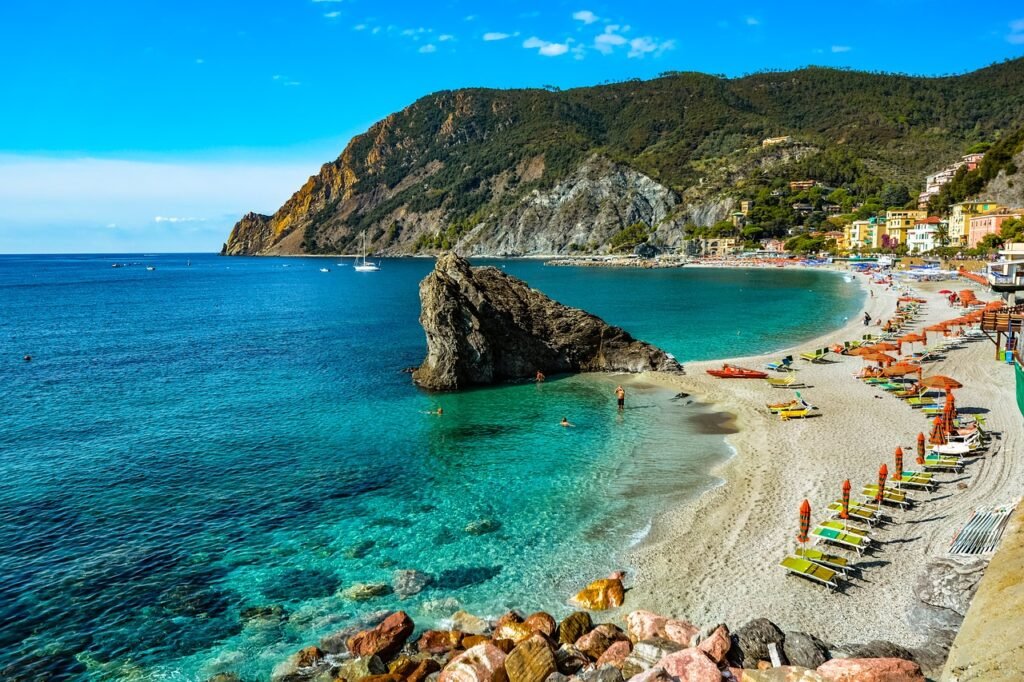
Monterosso is beautiful in itself, but honestly overrated compared to the other four villages. The beaches are lovely and sandy, equipped with loungers and umbrellas for rent, and if you can overlook the crowds, the sea is crystal clear and perfect for swimming.
Most of the beach is private and charges a fee, but there are also some free public beaches: below the train station, below the statue of the Giant, and at the end of the beach towards Vernazza, near the historic center.
Despite the crowded beach, in 2006, Forbes Traveler included Monterosso among the 25 “sexiest” beaches in the world, alongside Hawaii, Mexico, and the Maldives.
The promenade in Monterosso is truly lovely, lined with oleanders, palm trees, bars for aperitifs, and ice cream shops. Locals ride bicycles, which would be almost impossible in the other villages.
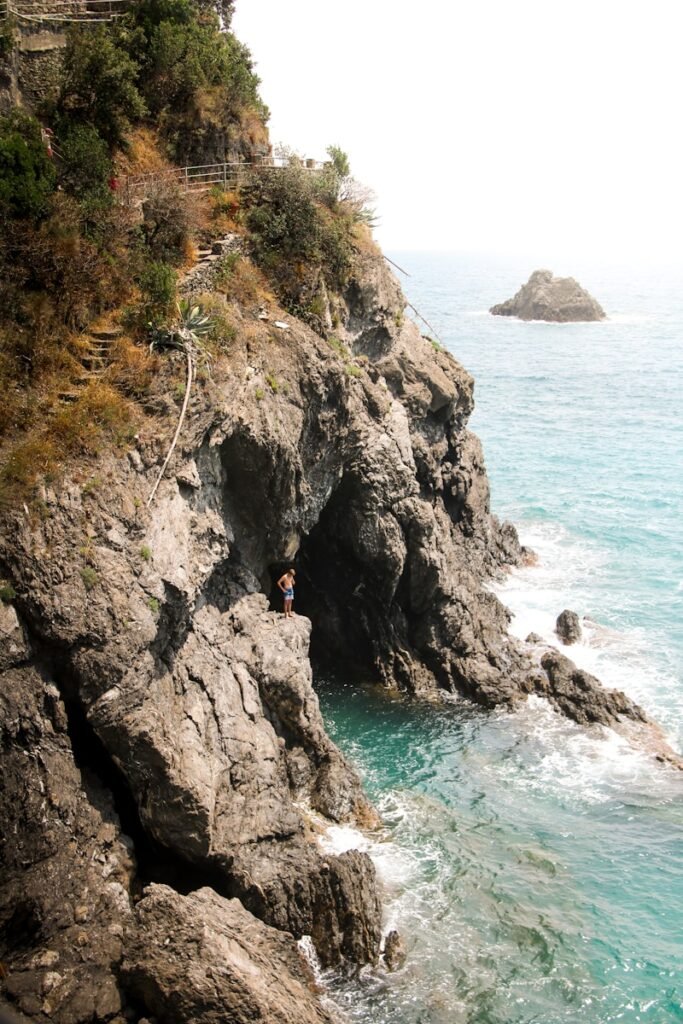

Monterosso is an ideal place for small children who want to enjoy the sea or even for adults who are not confident swimmers.
Fun fact: The history of Monterosso dates back to 643 AD when people from the hills descended towards the sea to hide from barbarian tribes. The village was named Monterosso because the ruling family had red hair (“Monte dei rossi” – “Mountain of the redheads”).

Vernazza
Next up is Vernazza, in my opinion, the true gem of Cinque Terre. According to many, and I must admit I agree, it is one of the most beautiful and authentic villages in the Cinque Terre region. It is full of colorful houses situated above a small harbor where you can take a swim. Traditional fishing boats are moored in the harbor, reminding you of how closely this village is tied to the sea.
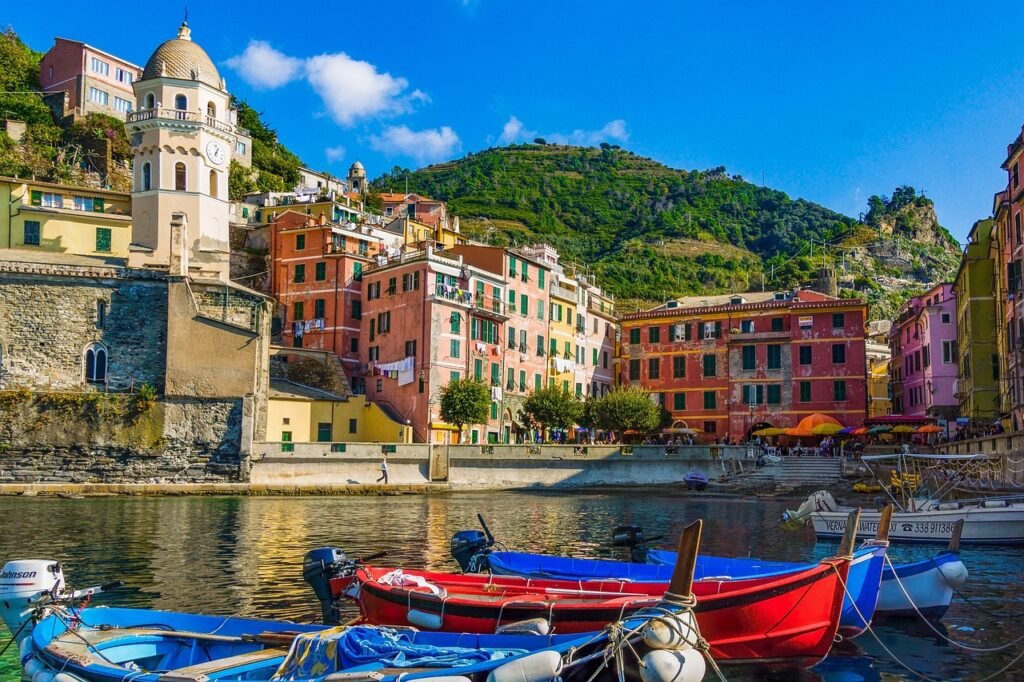
One of the main sights when you arrive in Vernazza is the Church of St. Margaret of Antioch, located right on the shore. It was built in the 14th century, and masses are still held there today.
A must-see spot is also the Doria Castle, an old fortress located above the harbor that offers an incredible view of the coastline and surrounding vineyards.
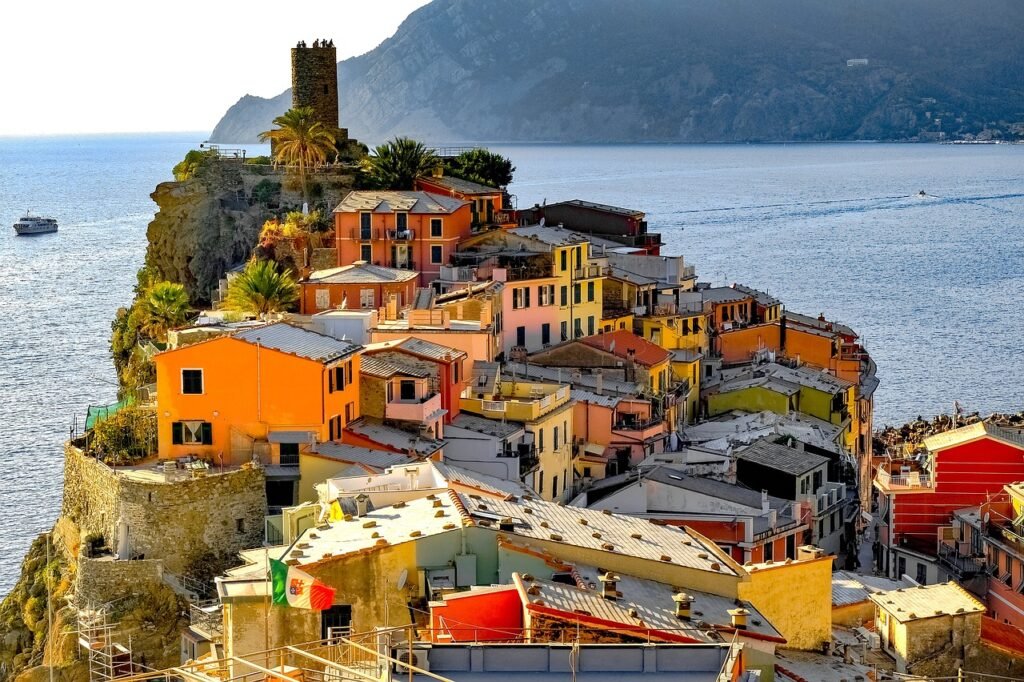
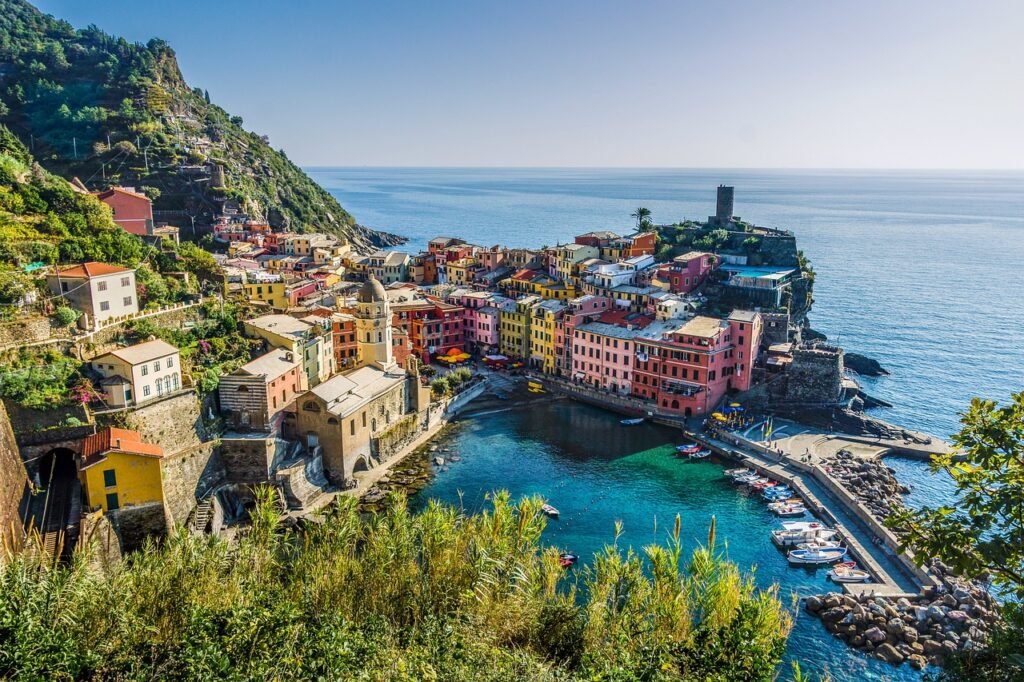
Vernazza is also known for its steep terraced vineyards, where grapes are grown for the local wine, Sciacchetrà, which is renowned worldwide.
Wherever you turn in this small village, you’ll be greeted by smiling people and even better food.
If you don’t have time to visit all five villages in one day, Vernazza should definitely be on your list.
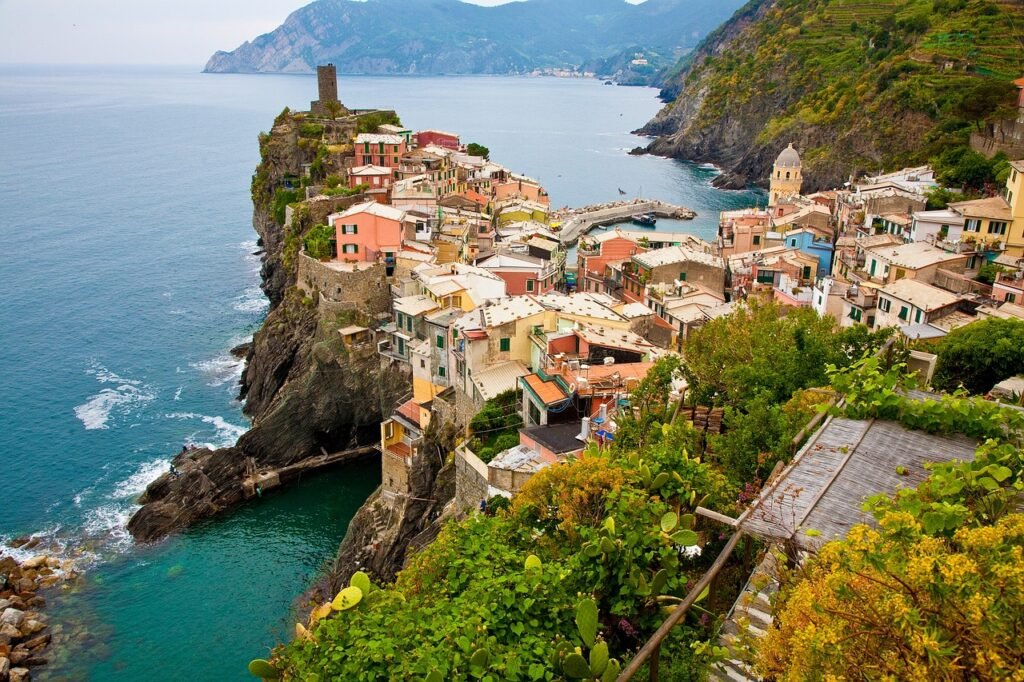
Corniglia
Situated atop a cliff, it is the smallest and most isolated village in the Cinque Terre region. Unlike the other villages, Corniglia doesn’t have direct access to the sea, which gives it a unique charm and a more tranquil atmosphere. It is definitely the least touristy village. Corniglia is reached by climbing 377 steps known as the Lardarina, but the effort is definitely worth it. From the top, there is an incredible panoramic view of the entire coast and surrounding vineyards.
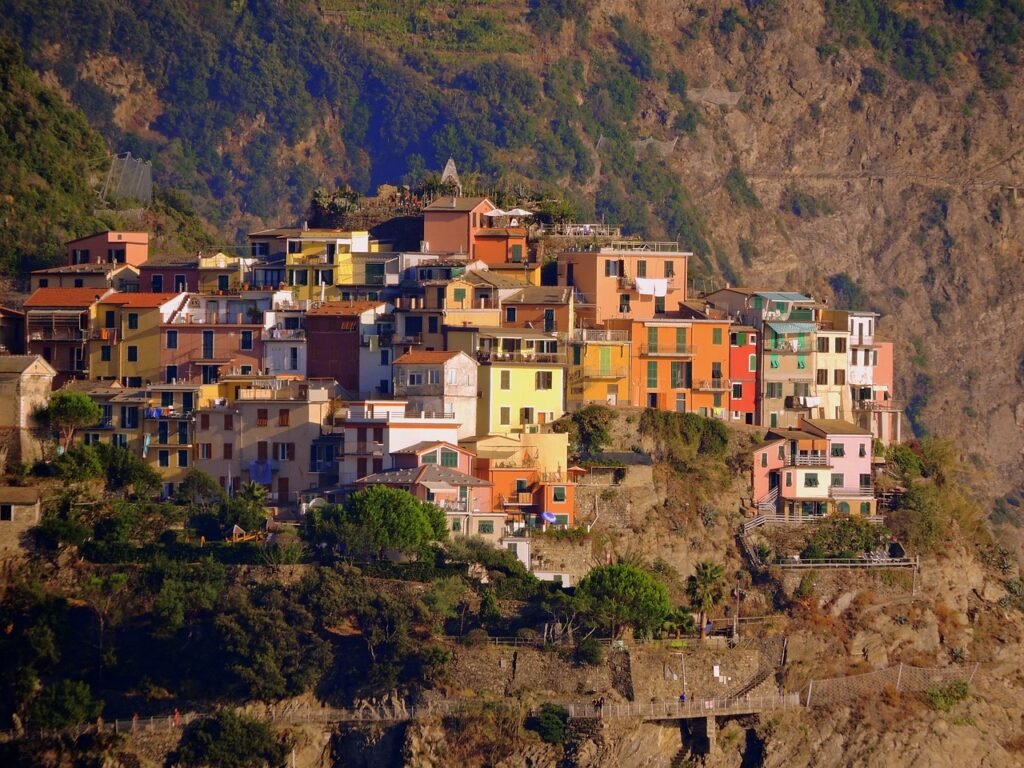

What makes Corniglia special are its narrow streets, stone houses, and laid-back way of life. As I mentioned earlier, this village is the least touristy, and as such, there are no large crowds, allowing you to fully experience local life. The village is known for its vineyards, so if you have the opportunity, don’t miss tasting the wine and freshly prepared seafood.
If you’re looking for a quieter place, with an incredible view and excellent food, Corniglia gets my recommendation every time.
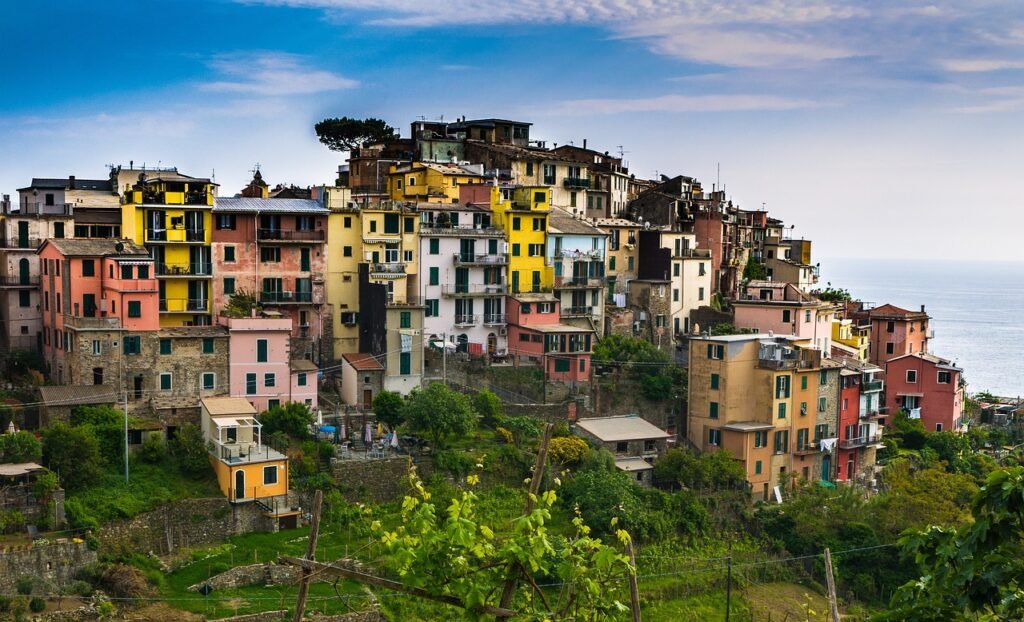
Manarola
One of the oldest and most colorful villages in Cinque Terre. Most of the images you find when you search for Cinque Terre are from here, as photographers are very fond of it due to its vibrancy and beauty.
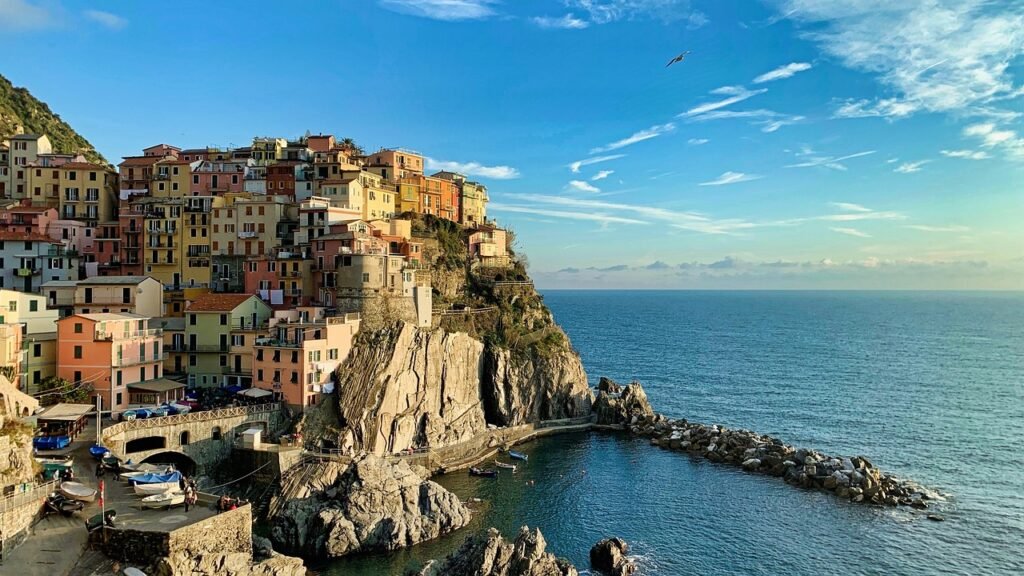

One of the most famous trails in Cinque Terre, the Via dell’Amore, starts right in Manarola. This romantic path connects Manarola with Riomaggiore and offers stunning views of the sea, making it an ideal spot for couples. Unfortunately, it is currently closed due to repairs, but Manarola still offers many long walking trails and viewpoints.
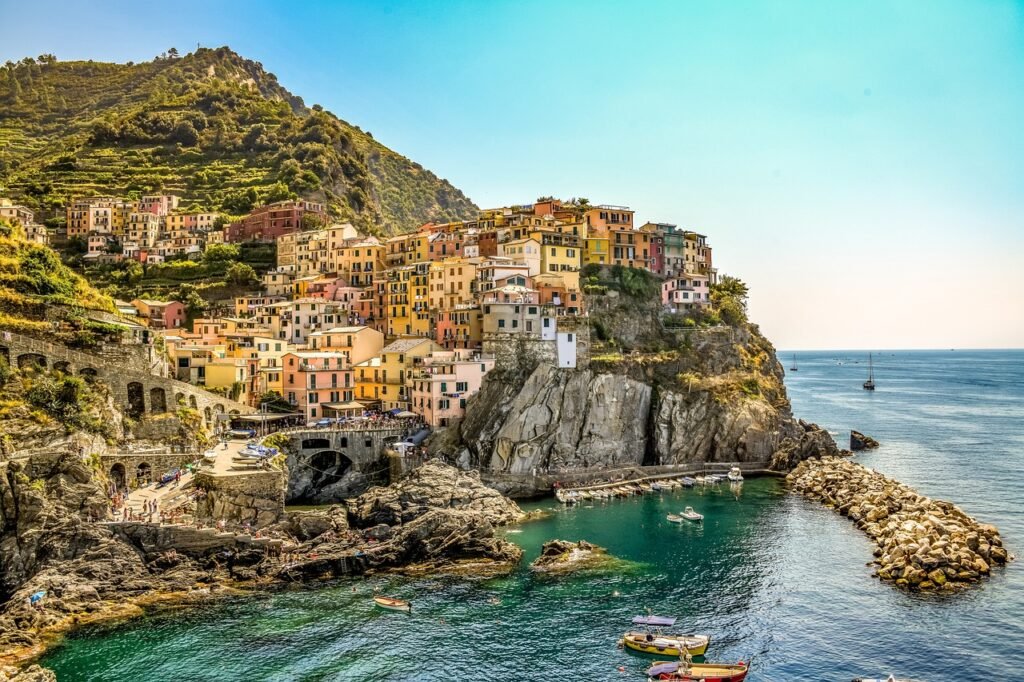
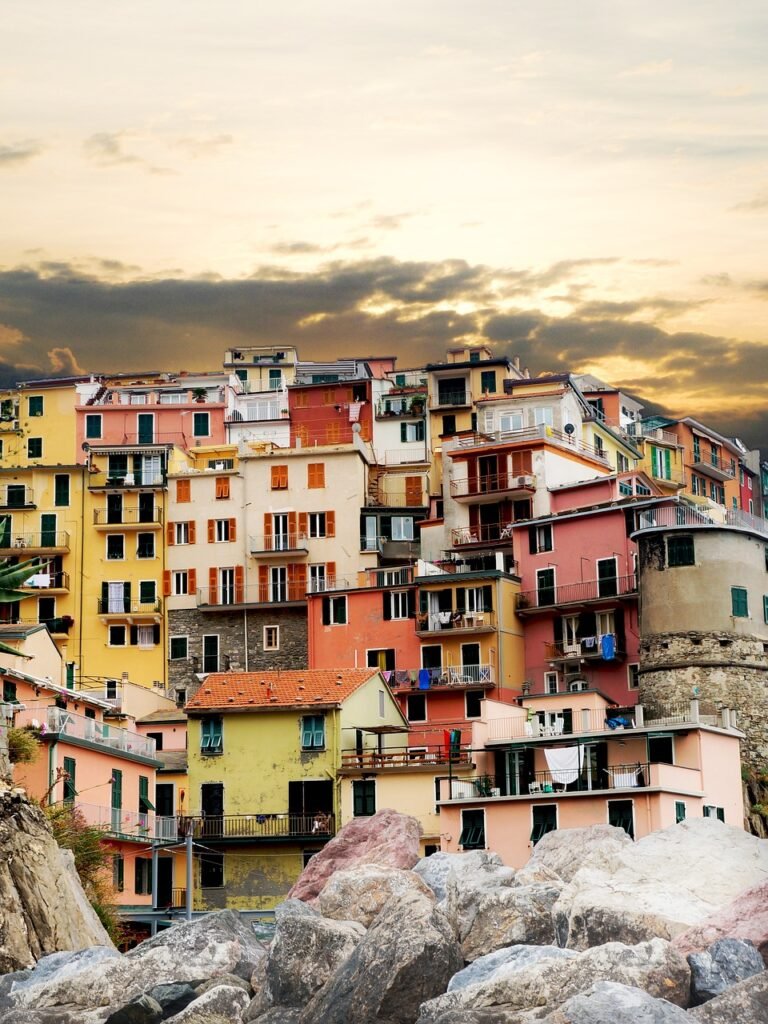
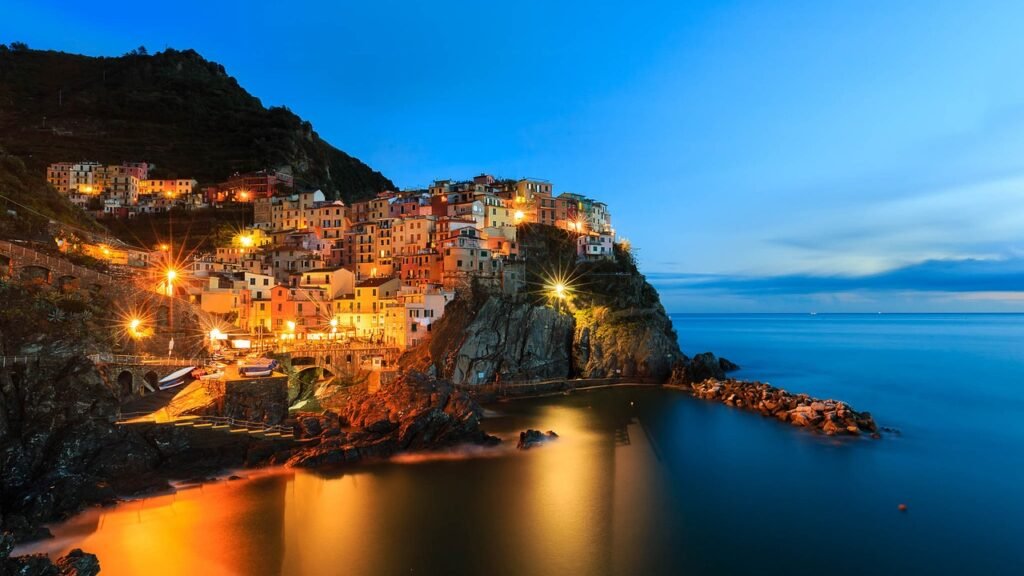
Riomaggiore
The southernmost village in Cinque Terre; if you’re coming from La Spezia, this will be your first stop. The village is located in a steep valley, with houses climbing towards the top.
One of the main attractions in Riomaggiore is the small, picturesque harbor with fishing boats swaying on the water.
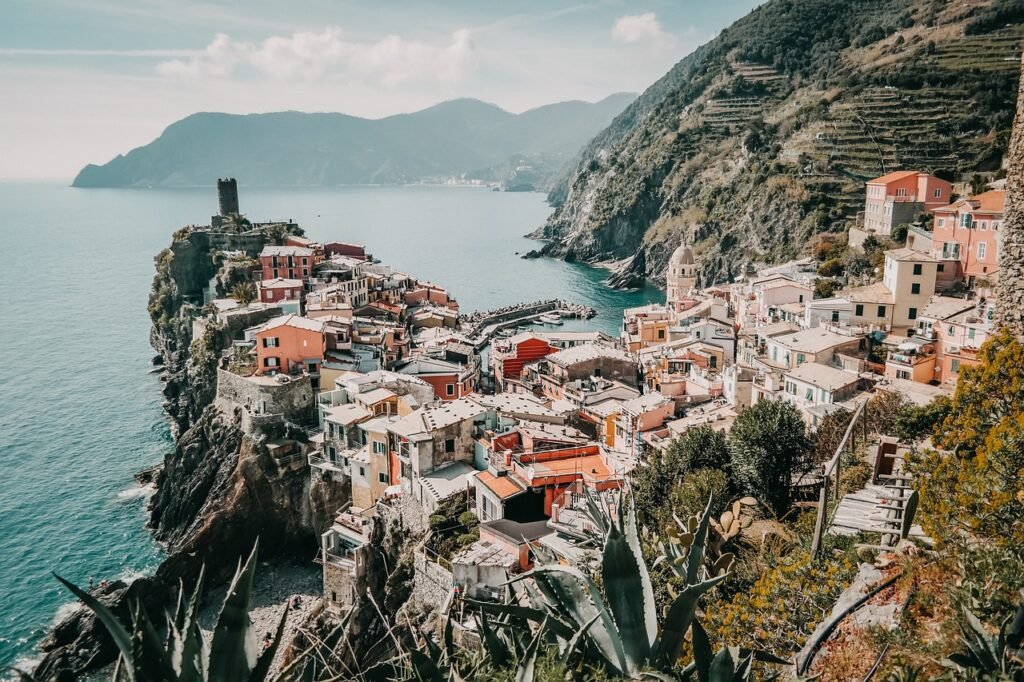

The village is also known for its hiking trails that lead to the surrounding hills and offer spectacular views of the coast.
Riomaggiore is an ideal place for those who want to combine exploration, relaxation, and enjoyment of the local cuisine. Like in the other villages, here you can taste local specialties, from fresh seafood to traditional Ligurian dishes.
In my opinion, Riomaggiore is the perfect final stop on your journey through Cinque Terre.
All in all, Cinque Terre is one of those places you’ll remember for a lifetime. Each of the five villages has its own unique story. My advice is to relax and enjoy the beauty of this region at your own pace, without rushing.













